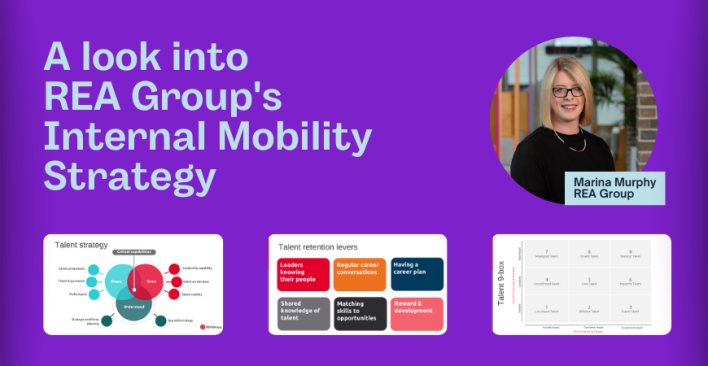It Takes Only One Interview Question to Accurately Predict Job Performance

A few weeks ago I suggested you could predict quality of hire, on-the-job performance, job satisfaction and retention with just one interview question. This six-minute video lesson summarizes the entire post and the process.
As far as I’m concerned, the continued use of skills-infested job descriptions, competency models and behavioural interviewing is the reason job satisfaction hasn’t improved in 20 years from a dismal 30% and diversity hiring is more talk than reality. Feel free to contact me if you’d like to argue the point(s) but watch the video first. It will be all you need to understand the problem and the obvious solution and/or you can read on.
Recognise that on-the-job performance requires both the ability to do the work and motivation to the work. This is shown in the Hiring Formula for Success in the upper right of the graphic. However, motivation to do the work is dependent on a lot of other factors. For one, is the actual work required to be done intrinsically motivating to the person doing it? If not, the person will underperform.
Second, is the hiring manager an appropriate hiring manager given the new hire’s management needs or is the hiring manager a jerk in the eyes of this new hire? If the latter, the person will underperform.
Third, does the person fit with the culture of the company? This includes the pace, how decisions are made, the resources available, the company values and its politics. A misfit on any of these factors and the person will underperform.
Given these issues the solution is obvious. First, define the actual work required to be done and all of the fit factors. Second, during the interview dig into the candidate’s major accomplishments doing comparable work and as part of this find out how the fit factors impacted the person’s performance. Doing this is actually as simple as it sounds.
When opening a new requisition recruiters should ask hiring managers to define the work that needs to be done before defining the skills the person needs to have to do the work. I refer to this as a performance-based job description listing the 5-6 critical tasks and performance objectives defining on-the-job success. These need to define the task, the action the candidate needs to perform and some measurable result. For a sales person this could be something like, “Achieve quota within six months.” For an engineer, it could be, “Complete the widget test and final design for high-volume production by Q4.” For a manager, it could be, “Upgrade the marketing team to support the company’s aggressive three-year growth plan.”
Once you know these performance objectives, just ask the candidate this question:
One of our major performance objectives is (describe the most important). We have 15 minutes allocated for you to tell me what you’ve done that’s most comparable. Can you give me a quick overview first, and then I’ll ask you a few clarifying questions?
As long as the candidate has accomplished something comparable, ask the same question again for the next most important performance objective. During the 15 minutes (for each accomplishment) make sure you get information about each of the factors on the Quality of Hire Talent Predictor Index in the graphic. The finalists will be those who answer all of the questions reasonably well. Of course, this takes multiple interview sessions.
The assessment is made on the growth and trend of the candidate’s accomplishments over time; the scope, scale and complexity of the accomplishments in comparison to actual job needs; a consistent pattern of achieving the expected results, and strong alignment on all of the fit factors. (Here’s the complete online training manual.) Use this Quality of Hire Talent Scorecard to rank and compare all of the candidates on the 1-5 rating scale shown in the graphic.
The Two Critical Factors for Increasing Interview Accuracy and Job Performance
I contend that having skills, experiences and competencies alone are inadequate for making good hiring decisions. Worse, they prevent diversity candidates and top performers who have a different mix of skills, experiences and competencies but have achieved comparable results from being considered. While a structured, behavioural interview is effective for reducing bias, it’s too generic to accurately assess job-specific performance including all of the factors involved in job fit.
A performance-based job description used in conjunction with the one-question performance-based interview solves all of these problems. This has been proven in more than one thousand different hiring situations. Ability to do the work in relationship to fit is what drives motivation, performance and job satisfaction. Contact us if you’d like to see how it can be proven at your company in a simple test by comparing the results of hiring two people for the same job, one using Performance-based Hiring and the other using your existing techniques. You’ll quickly discover there’s no comparison.
This article has been reposted with the permission of the author Lou Adler, the CEO of The Adler Group and the author of The Essential Guide for Hiring & Getting Hired. Lou is the founder of Performance-based Hiring. The article originally appeared on LinkedIn’s Talent Blog. Mr. Adler can be contacted at info@louadlergroup.com
Cover Image: Shutterstock
Talent Acquisition (TA) is on the cusp of a new wave of innovation and the 12th Australasian Talent Conference will be shining the light brightly on it – say hi to Artificial Intelligence (A.I.). Find out more.

Related articles
Leave a Reply
Sign up to our newsletter
Get a weekly digest on the latest in Talent Acquisition.
Deliver this goodness to my inbox!



